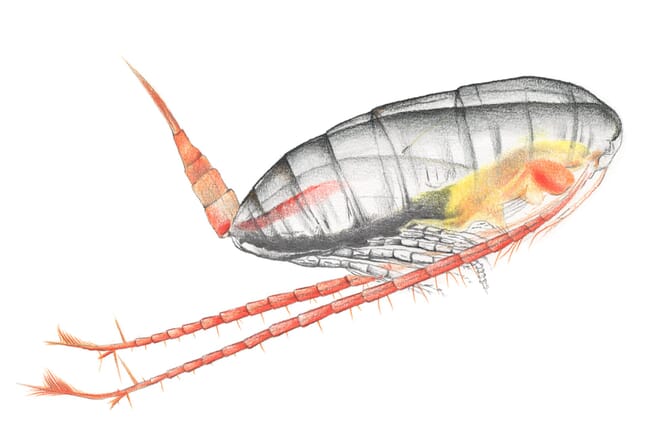
It has huge potential as an aquafeed ingredient if it can be economically harvested in high volumes © Laura Hidalgo Lopez
New research from Nofima suggests that skippers still find it more profitable to pursue other species and that Calanus isn’t as lucrative a target.
“Fishing boat owners may find themselves in a position where they have to choose which species they want to prioritise. For the individual fishing vessels, the decision to participate in the Calanus finmarchicus fishery or other fisheries will depend on the relative profitability between Calanus finmarchicus and other available fisheries. They then choose the one that is most profitable,” explained Nofima scientist Egil Hogrenning.
Calanus are particularly important for juvenile cod and for pelagic species and the Calanus finmarchicus stock in the Norwegian Sea amounts to 33 million tonnes, while the stipulated quota is less than one thousandth of this figure.

Landings amount to less than one percent of the quota and the quota represents less than one thousandth of the biomass © Nofima
Aquafeed potential?
Historically fishing for copepods in Norway has been very limited. Zooca (previously Calanus AS), which produces dietary supplements from Calanus – which are marketed for fish and shrimp feeds as well as human health products – has been conducting trial fishing for the species, thanks to a 5000-tonne trial fishing permit.
However, although the Norwegian authorities want to harvest more of hitherto scarcely utilised marine species at lower trophic levels and so recently issued commercial fishing permits to facilitate greater utilisation of the copepods, the permits have been scarcely utilised so far. In 2020, no deliveries of Calanus finmarchicus were made in Norway. In 2021 and 2022, while some were landed, the total quota was hardly filled. Many fishing vessels have been granted fishing permits, but only three of them landed copepods over this 2 year period.
“We have studied the operational basis of the licensed vessels, and based on this, we have discussed conditions that can determine whether these vessels will conduct copepod fishing,” said Hogrenning.
The prospect of profit is crucial
According to the report, the prospect of profit from the Calanus finmarchicus fishery will be largely decisive for future copepod fishing.
“In the near future, the fishing activity for Calanus finmarchicus will probably depend on the permitted fishing areas, as well as how much can be fished in the areas, but also just as much on the development of fishing gear and the demand for Calanus finmarchicus”, said Hogrenning.
